oklahoma
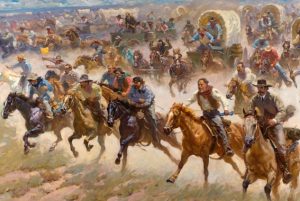 As Americans began to expand to the West, new territories had to be opened for settlement. Of course, this was not always met with approval from the Indian nations who were living there at the time. Nevertheless, the settling of this nation would not be stopped, and while it was handled wrong in many ways, it was inevitable. Nearly two million acres of land in Oklahoma Territory had been preciously deemed unsuitable for white settlement, and so were given to the Native Americans who had been previously removed from their traditional lands to allow for white settlement. The relocations began in 1817. By the 1880s, Indian Territory was home to a variety of tribes, including the Chickasaw, Choctaw, Cherokee, Creek, Cheyenne, Comanche, and Apache.
As Americans began to expand to the West, new territories had to be opened for settlement. Of course, this was not always met with approval from the Indian nations who were living there at the time. Nevertheless, the settling of this nation would not be stopped, and while it was handled wrong in many ways, it was inevitable. Nearly two million acres of land in Oklahoma Territory had been preciously deemed unsuitable for white settlement, and so were given to the Native Americans who had been previously removed from their traditional lands to allow for white settlement. The relocations began in 1817. By the 1880s, Indian Territory was home to a variety of tribes, including the Chickasaw, Choctaw, Cherokee, Creek, Cheyenne, Comanche, and Apache.
By the 1890s, with the improvements in agricultural and ranching techniques led some white Americans to realize that the Indian Territory land could be valuable, so they began to pressure the United States government to allow white settlement in the region. In 1889, President Benjamin Harrison agreed, making the first of a long series of authorizations that eventually removed most of Indian Territory from Indian control. To begin the process of white settlement, President Harrison chose to open a 1.9 million acre section of Indian Territory that the government had never assigned to any specific tribe. I suppose it was a way to ease into it without taking land from any specific tribe…initially anyway. However, subsequent openings of sections that 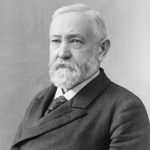 were designated to specific tribes were achieved primarily through the Dawes Severalty Act of 1887, which allowed whites to settle large swaths of land that had previously been designated to specific Indian tribes.
were designated to specific tribes were achieved primarily through the Dawes Severalty Act of 1887, which allowed whites to settle large swaths of land that had previously been designated to specific Indian tribes.
On March 3, 1889, Harrison announced the government would open the 1.9 million-acre tract of Indian Territory for settlement precisely at noon on April 22, 1889. Anyone could join the race for the land, but no one was supposed to jump the gun. With only seven weeks to prepare, the land-hungry Americans quickly began to gather around the borders of the irregular rectangle of territory. They were referred to as “Boomers,” and by the appointed day more than 50,000 hopefuls were living in tent cities on all four sides of the territory. At precisely high noon, thousands of would-be settlers make a mad dash into the newly opened Oklahoma Territory to claim cheap land. I can only imagine the chaos. The events that day at Fort Reno on the western border were typical of the entire process. At 11:50am, soldiers called for everyone to form a line. When the hands of the clock reached noon, the cannon of the fort boomed, and the soldiers signaled the settlers to start. With the crack of hundreds of whips, thousands of Boomers streamed into the territory in wagons, on horseback, and on foot. All told, from 50,000 to 60,000 settlers entered the territory that day. By nightfall, they had staked thousands of claims either on town lots or quarter section farm plots. Towns like Norman, Oklahoma City, Kingfisher, and Guthrie sprang into being almost overnight.
 An extraordinary display of both the pioneer spirit and the American lust for land, the first Oklahoma land rush was also plagued by greed and fraud. Cases involving “Sooners,” who were people who had entered the territory before the legal date and time overloaded courts for years to come. I’m sure that the Indians weren’t pleased either, and I would imagine that there was periodic trouble over the whole process too. The government attempted to improve the operations of subsequent runs by adding more controls, finally adopting a lottery system to designate claims. By 1905, white Americans owned most of the land in Indian Territory. Two years later, the area once known as Indian Territory entered the Union as a part of the new state of Oklahoma.
An extraordinary display of both the pioneer spirit and the American lust for land, the first Oklahoma land rush was also plagued by greed and fraud. Cases involving “Sooners,” who were people who had entered the territory before the legal date and time overloaded courts for years to come. I’m sure that the Indians weren’t pleased either, and I would imagine that there was periodic trouble over the whole process too. The government attempted to improve the operations of subsequent runs by adding more controls, finally adopting a lottery system to designate claims. By 1905, white Americans owned most of the land in Indian Territory. Two years later, the area once known as Indian Territory entered the Union as a part of the new state of Oklahoma.

 In the late 19th century, America was growing. The pioneers headed west, because many couldn’t resist the lure of the tall grassy land in the midwestern and southern plains of the United States. They planned to settled there to farm. The next few decades were prosperous, but when the 1930s rolled in, so did strong winds, drought, and clouds of dust that plagued nearly 75 percent of the United States between 1931 and 1939. The Dust Bowl, as it was known, had arrived. The problem likely began in the early 1920s, when a post-World War I recession led farmers to try new mechanized farming techniques as a way to increase profits. Many bought plows and other farming equipment, and between 1925 and 1930 more than 5 million acres of previously unfarmed land was plowed. With the help of mechanized farming, farmers produced record crops during the 1931 season. However, overproduction of wheat coupled with the Great Depression led to severely reduced market prices. The wheat market was flooded, and people were too poor to buy. Farmers were unable to earn back their production costs and expanded their fields in an effort to turn a profit. The prairie was covered with wheat in place of the natural drought-resistant grasses, and to add to the problem, they left any unused fields bare. With the drought leaving much of the country severely dry, no natural grasses to hold the dirt in place, the higher than normal temperatures, and increasingly strong winds, the country was hit with what many called Black Blizzards, which were rolling dust storms driven by high winds.
In the late 19th century, America was growing. The pioneers headed west, because many couldn’t resist the lure of the tall grassy land in the midwestern and southern plains of the United States. They planned to settled there to farm. The next few decades were prosperous, but when the 1930s rolled in, so did strong winds, drought, and clouds of dust that plagued nearly 75 percent of the United States between 1931 and 1939. The Dust Bowl, as it was known, had arrived. The problem likely began in the early 1920s, when a post-World War I recession led farmers to try new mechanized farming techniques as a way to increase profits. Many bought plows and other farming equipment, and between 1925 and 1930 more than 5 million acres of previously unfarmed land was plowed. With the help of mechanized farming, farmers produced record crops during the 1931 season. However, overproduction of wheat coupled with the Great Depression led to severely reduced market prices. The wheat market was flooded, and people were too poor to buy. Farmers were unable to earn back their production costs and expanded their fields in an effort to turn a profit. The prairie was covered with wheat in place of the natural drought-resistant grasses, and to add to the problem, they left any unused fields bare. With the drought leaving much of the country severely dry, no natural grasses to hold the dirt in place, the higher than normal temperatures, and increasingly strong winds, the country was hit with what many called Black Blizzards, which were rolling dust storms driven by high winds.
Now, if you have ever been in a Haboob (Arabic meaning, blasting), which is a type of intense dust storm carried on a weather front, you have a pretty good idea of what the Dust Bowl was like, except that instead of lasting a few hours, the Dust Bowl storms continued to occur from 1931 to 1939. Now imagine 8 plus years of dust 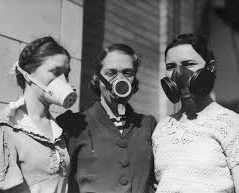 blowing everywhere!! It was in their hair, in their eyes, in their houses, and in the food. They couldn’t get away from it, and since 75 percent of the United States was in the grip of the Dust Bowl, moving didn’t help either…not to mention the fact that no one could afford to anyway. It was a disgusting situation, and it was about to get much worse. By 1932, 14 Black Blizzards were reported, and in just one year, the number increased to nearly 40. It seemed that no end was in sight, but still, the worst was yet to come.
blowing everywhere!! It was in their hair, in their eyes, in their houses, and in the food. They couldn’t get away from it, and since 75 percent of the United States was in the grip of the Dust Bowl, moving didn’t help either…not to mention the fact that no one could afford to anyway. It was a disgusting situation, and it was about to get much worse. By 1932, 14 Black Blizzards were reported, and in just one year, the number increased to nearly 40. It seemed that no end was in sight, but still, the worst was yet to come.
On the afternoon of April 14, 1935, the residents of the Plains States were forced to take cover as a Black Blizzard, blew through the region. The storm hit the Oklahoma Panhandle and Northwestern Oklahoma first, moving south for the remainder of the day. It hit Beaver around 4:00 pm, Boise City around 5:15 pm, and Amarillo, Texas, at 7:20 pm. The conditions were the most severe in the Oklahoma and Texas panhandles, but the storm’s effects were felt in other surrounding areas. The day would forever be labeled Black Sunday. It was one of the worst dust storms in American history and it caused immense economic and agricultural damage. It is estimated to have displaced 300 million tons of topsoil from the prairie area of the United States. The storm was so harsh because of the high winds that hit the area that day. The combination of drought, erosion, bare soil, and winds caused the dust to fly freely and at high speeds. The loose dust flying around was enough to inhale, and many people suffocated with the dust filling their lungs. The day was a black day for more reasons than one. It is hard to contemplate a dust storm that was so severe that people couldn’t breathe…to the point of death! Nevertheless, that was exactly what Black Sunday was like.
Following the horrible Black Blizzards of 1935, and the massive amount of damage caused by these storms, Congress passed the Soil Conservation Act, which established the Soil Conservation Service as a 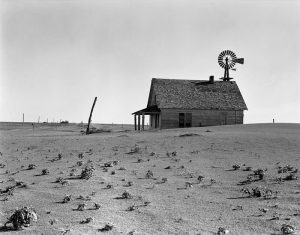
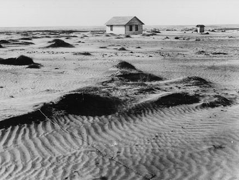 permanent agency of the USDA. The SCS was created in an attempt to provide guidance for land owners and land users to reduce soil erosion, improve forest and field land, and conserve and develop natural resources. It was the hope that the United States could prevent another Dust Bowl, and while small areas have a tendency to have dust storms, there has never been another era like the Dust Bowl era that the United States citizens suffered in the 1930s.
permanent agency of the USDA. The SCS was created in an attempt to provide guidance for land owners and land users to reduce soil erosion, improve forest and field land, and conserve and develop natural resources. It was the hope that the United States could prevent another Dust Bowl, and while small areas have a tendency to have dust storms, there has never been another era like the Dust Bowl era that the United States citizens suffered in the 1930s.
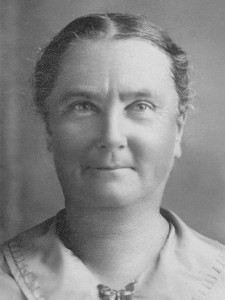 When a young woman gets married, she expects to live happily ever after. Unfortunately, for my husband, Bob Schulenberg’s second great grandmother, Mary LuLu Taylor, that was not to be. Mary, who went by LuLu, married Bob’s second great grandfather, James Leary on September 30, 1880 in Shelby, Missouri. They were very much in love. The young couple would move to Forsyth, Montana and on January 4, 1886, she gave birth to Bob’s great grandfather, Marion Chester Leary, who went by Chester for most of his life. Now their family had entered the next phase. They were no longer a couple, but rather, a family…at least for a while. The couple would move again, this time to St Louis, Missouri. March 26, 1888 would find LuLu a widow, with a two year old son to raise…alone.
When a young woman gets married, she expects to live happily ever after. Unfortunately, for my husband, Bob Schulenberg’s second great grandmother, Mary LuLu Taylor, that was not to be. Mary, who went by LuLu, married Bob’s second great grandfather, James Leary on September 30, 1880 in Shelby, Missouri. They were very much in love. The young couple would move to Forsyth, Montana and on January 4, 1886, she gave birth to Bob’s great grandfather, Marion Chester Leary, who went by Chester for most of his life. Now their family had entered the next phase. They were no longer a couple, but rather, a family…at least for a while. The couple would move again, this time to St Louis, Missouri. March 26, 1888 would find LuLu a widow, with a two year old son to raise…alone.
For a young mother in the 1880s, being a widow didn’t leave her with a lot of options. LuLu moved back to Shelby, where she met her second husband, James Begier. They 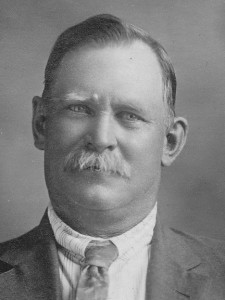 were married on March 18, 1890. LuLu thought her life had turned around, and in many ways, she was right. LuLu and James Begier went on to have Minnie in 1893, John in 1896, and Mable in 1902. I’m sure that by 1902, LuLu felt like her life was finally perfect. She had her husband and her children. Nevertheless, life would not reamin so perfect forever. This marriage would not be a happily ever after marriage either, because while James Begier’s death date is not known at this time, the last known census showing James Begier was in 1910.
were married on March 18, 1890. LuLu thought her life had turned around, and in many ways, she was right. LuLu and James Begier went on to have Minnie in 1893, John in 1896, and Mable in 1902. I’m sure that by 1902, LuLu felt like her life was finally perfect. She had her husband and her children. Nevertheless, life would not reamin so perfect forever. This marriage would not be a happily ever after marriage either, because while James Begier’s death date is not known at this time, the last known census showing James Begier was in 1910.
LuLu would remarry again on February 19, 1919 in Rosebud, Montana to Milo Warren. She had moved back to Forsyth because her eldest son, Chester Leary, was living there, with his family. When a woman is widowed, it is often the best option to move to where family lives…especially in those days. As with LuLu’s previous husbands, Milo would predecease her on August 21, 1928. Once again, LuLu moved. This time to be near her youngest daughter, Mabel Begier Brown. I don’t really know if Mabel was sick during this time or not, but LuLu passed away on April 26, 1929 in Fletcher, Oklahoma, and her daughter, Mabel Begier Brown passed away on 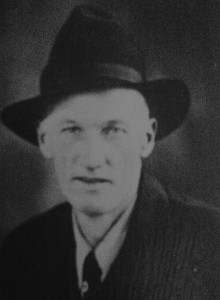 April 2, 1931 in Elgin, Oklahoma, and the young age of only 28 years.
April 2, 1931 in Elgin, Oklahoma, and the young age of only 28 years.
While, LuLu’s life was filled with times of sadness, she did nevertheless, live a full life. She had the opportunity to live in several places, and she was blessed with four children, and many grandchildren and multiple levels of great grandchildren, including my husband and his siblings, by daughters and their cousins, and my grandchildren and their cousins. While I never had the opportunity to meet LuLu in person, I have long beed intrigued by her life. My only regret is that I don’t have pictures of all her husbands…just James Begier, nor of her children…just Chester Leary. Nevertheless, I feel blessed to have those few. LuLu was born on August 31, 1861, and today is the 154th anniversary of her birth. Happy birthday in Heaven Mary LuLu Taylor Leary Begier Warren. I look forward to meeting you someday.
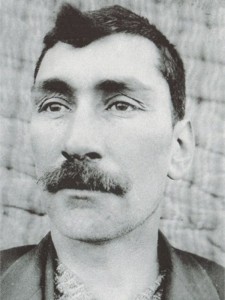 Like many people, my great grand uncle, Cornealius Spencer and his wife Leola Stinson Spencer left Iowa and made their way to Oklahoma in the spring of 1893. With them were their children and Leola’s parents. They had heard that the government was giving away land and they had decided to make a new start. The homestead they received was 160 acres, but the land came with qualifications. The homestead owner was required to fence the land, build a building, and live on the land for a period of one year before it became theirs. When I think of those reasonable qualifications, in light of today and all we have now, I think that the land they received was really cheap…and maybe it was, but times were different then, and living on a piece of land that had no improvements, and the soil was hard and rocky, might not have been so easy. They didn’t have the farming equipment we have now, so they had to till the ground with a team of horses or a yoke of oxen and a hand plow. They couldn’t just run down to the lumber store to buy building supplies. They had to cut down their own logs to build a home, or live in a sod hut…which many people then did for a time.
Like many people, my great grand uncle, Cornealius Spencer and his wife Leola Stinson Spencer left Iowa and made their way to Oklahoma in the spring of 1893. With them were their children and Leola’s parents. They had heard that the government was giving away land and they had decided to make a new start. The homestead they received was 160 acres, but the land came with qualifications. The homestead owner was required to fence the land, build a building, and live on the land for a period of one year before it became theirs. When I think of those reasonable qualifications, in light of today and all we have now, I think that the land they received was really cheap…and maybe it was, but times were different then, and living on a piece of land that had no improvements, and the soil was hard and rocky, might not have been so easy. They didn’t have the farming equipment we have now, so they had to till the ground with a team of horses or a yoke of oxen and a hand plow. They couldn’t just run down to the lumber store to buy building supplies. They had to cut down their own logs to build a home, or live in a sod hut…which many people then did for a time.
The families arrived with two covered wagons and Leola with two small children…four year old Oren and two year old Edith. The wagons were pulled by a pair of oxen. With no bits or lines to guide the oxen. They pulled the wagon by a yoke and Leola had to guide them by the voice commands or “gee” and “haw” for left and right and “whoa” for stop. The milk cow was tied to the wagon and the family brought along a coop of chickens. They camped out at night, and let the chickens eat the bugs in the area. There were no roads to get to Oklahoma, so they had to simply go across the prairie.
Once they arrived in Blaine county, the men filed on two places that were next to each other. Each place had a spring for water, until a well could be dug. They dug a dugout near the spring, and were settled by June 12, 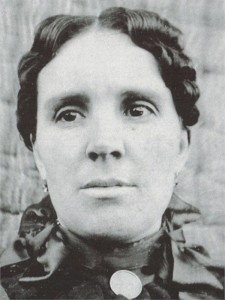 1893, when their new daughter Elsie Jane was born. They lived in the dugout until a home could be built. There were no towns close, so they had to rely on what they could hunt. Thankfully there was an abundance of deer, rabbits, turkeys, and even squirrels, so they never went hungry. Both Cornealius and Leola were excellent shots, so it didn’t matter who was available to hunt, both were able to get food for the family.
1893, when their new daughter Elsie Jane was born. They lived in the dugout until a home could be built. There were no towns close, so they had to rely on what they could hunt. Thankfully there was an abundance of deer, rabbits, turkeys, and even squirrels, so they never went hungry. Both Cornealius and Leola were excellent shots, so it didn’t matter who was available to hunt, both were able to get food for the family.
I can fully understand why it was so hard to make a homestead work now, because the supplies the homesteaders needed were not readily available. Many people gave up and headed back east, but my great grand uncle and his family stuck it out, and spent their remaining years in Oklahoma. They would raise their ten children there and were very successful in their endeavors. Homesteading wasn’t designed to be easy. Getting 160 acres of land is a big deal, and while the land ended up being free in the monetary sense, it certainly did not in the blood, sweat, and tears sense. The homesteader earned every inch of that property.
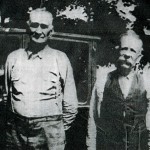 After my 2nd great grandfather, Allen Spencer passed away suddenly at the young age of just 56 years, my 2nd great grandmother, Lydia Spencer found herself in one of the hardest positions anyone ever has to face. In those days, few of the women worked outside the home, and with her husband and the bread winner of her family gone, she had some hard choices to make. She still had several children at home, including three sons and one daughter. Her daughter, Teresa would marry later that year, and eventually move to North Dakota. Her son Allen would follow his sister to North Dakota, and eventually move to Washington, where he would marry and live out his life. That left Lydia in Iowa, with her two remaining sons, Cornelius and Luther…at least for a time. That had to have been the hardest part of the time too, considering the grief she must have been feeing.
After my 2nd great grandfather, Allen Spencer passed away suddenly at the young age of just 56 years, my 2nd great grandmother, Lydia Spencer found herself in one of the hardest positions anyone ever has to face. In those days, few of the women worked outside the home, and with her husband and the bread winner of her family gone, she had some hard choices to make. She still had several children at home, including three sons and one daughter. Her daughter, Teresa would marry later that year, and eventually move to North Dakota. Her son Allen would follow his sister to North Dakota, and eventually move to Washington, where he would marry and live out his life. That left Lydia in Iowa, with her two remaining sons, Cornelius and Luther…at least for a time. That had to have been the hardest part of the time too, considering the grief she must have been feeing.
Luther married Ellen Dykes in 1885, and Cornealius married Leona Stinson on February 1, 1888. By 1900, the two brothers along with their families and their mother had moved to the Deer Creek, Oklahoma area. I know that in the years following their fathers death, these two men took on the role of caregiver of sorts for their mother. It wasn’t necessarily that she needed a caregiver, at only 53 years of age, but rather that these two brothers took on the role of picking up the pieces of her shattered life and helping her through the rough transition years, during which she went from being a wife to a widow. It isn’t that she was incapable, but it would be really hard to find yourself widowed at such a young age. You had thought you and your souse would grow old together, and now you have been left to try to figure out how to move on alone.
Little has been said about the role the two brothers played in her life, and I suppose that is because it was just expected of them and so everyone assumed they just did their job. I suppose that is true to a large degree, but there were other children in the family, and yet they chose to take on this role, and she chose to go to Oklahoma with these two sons, rather than move to North Dakota, Wisconsin, or Washington with her other children. She loved the others very much, and the pictures tell me that she saw them whenever she could, but she moved to Oklahoma with Cornealius and Luther, and lived in Luther’s home until her passing in 1906, at the age of 75.
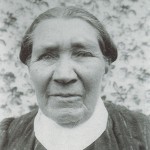 It takes a very special person to move their elderly parent into their home, and I don’t just mean that parent’s child, but the spouse of that child too. You can’t take in your parent without the ok of your spouse, because this is going to affect the whole family. In this case, it is likely that the time Lydia lived with her son Luther and his family in Oklahoma, was about ten years, but in reality, that is a long time. The last days could have been very stressful and trying, given the way, aging parents get weak and tired as they get closer to death. Yes, I think that Luther and his wife, Ellen had to be very special people to make sure that Lydia was taken care of, and not lonely. I’m sure that went a long way toward picking up the pieces of her life, after the loss of her husband, Allen. That leaves me with a lot of respect for these sons and their families.
It takes a very special person to move their elderly parent into their home, and I don’t just mean that parent’s child, but the spouse of that child too. You can’t take in your parent without the ok of your spouse, because this is going to affect the whole family. In this case, it is likely that the time Lydia lived with her son Luther and his family in Oklahoma, was about ten years, but in reality, that is a long time. The last days could have been very stressful and trying, given the way, aging parents get weak and tired as they get closer to death. Yes, I think that Luther and his wife, Ellen had to be very special people to make sure that Lydia was taken care of, and not lonely. I’m sure that went a long way toward picking up the pieces of her life, after the loss of her husband, Allen. That leaves me with a lot of respect for these sons and their families.
 Many little girls want nothing more than to be just like their mommy, and my cousin Shirley was no different. In her eyes, her mom was the most beautiful, sophisticated, elegant, and yet strong woman in the world. Her mom, my Aunt Ruth Wolfe was her hero. She was everything Shirley ever wanted to be. Aunt Ruth was so good at so many things. It’s strange to me, that while we saw Aunt Ruth a lot when I was a kid, somehow I didn’t know about all the things she was capable of doing. I knew about some things of course, like her gardening and cooking, but that is something lots of people are good at, so it didn’t seem unusual. While those things didn’t seem unusual to me, finding out years after her passing, that she was an artist and a musician as well, was surprising to me. Aunt Ruth was one of those people who could pick any instrument and play it like she had been taking lessons for years, and yet she hadn’t. Hers was just a natural talent. Shirley remembers the old horn she found. She took it to her mom, and within two days, Aunt Ruth could play it. Shirley is pretty sure it was a Trumpet.
Many little girls want nothing more than to be just like their mommy, and my cousin Shirley was no different. In her eyes, her mom was the most beautiful, sophisticated, elegant, and yet strong woman in the world. Her mom, my Aunt Ruth Wolfe was her hero. She was everything Shirley ever wanted to be. Aunt Ruth was so good at so many things. It’s strange to me, that while we saw Aunt Ruth a lot when I was a kid, somehow I didn’t know about all the things she was capable of doing. I knew about some things of course, like her gardening and cooking, but that is something lots of people are good at, so it didn’t seem unusual. While those things didn’t seem unusual to me, finding out years after her passing, that she was an artist and a musician as well, was surprising to me. Aunt Ruth was one of those people who could pick any instrument and play it like she had been taking lessons for years, and yet she hadn’t. Hers was just a natural talent. Shirley remembers the old horn she found. She took it to her mom, and within two days, Aunt Ruth could play it. Shirley is pretty sure it was a Trumpet.
Shirley tells me that Aunt Ruth had the voice of an angel, but because of her shyness, very few people ever got to hear her sing. Sadly, I don’t recall ever being privileged enough to hear her sing. She could yodel too, but only her husband, my Uncle Jim got to hear her do that. I just never realized that she was so shy. How could I have not known that? I guess she just wasn’t shy around me and the rest of our family. Shy was something Aunt Ruth never was with us. Our families loved to get together, and when they lived here in Casper, we saw a 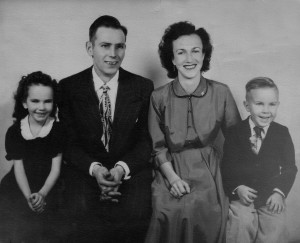 lot of them. There were picnics and camping trips to the Big Horns and Casper Mountain. Another thing I never knew about Aunt Ruth is that she was claustrophobic. When camping, she had to sleep with her head outside the tent. Where Aunt Ruth went, of course, Uncle Jim went too, so when she slept with her head outside the tent, so did he. That gave their kids something to tease them about. They were dubbed the star gazers. On one trip to South Dakota, the family went to the Rushmore Caverns. They were worried about how Aunt Ruth would do there. She made it further than expected, even going through Fat Man’s Misery, but just couldn’t make it the whole way. I’m sure my sister, Allyn Hadlock could totally agree with Aunt Ruth when it came to claustrophobia.
lot of them. There were picnics and camping trips to the Big Horns and Casper Mountain. Another thing I never knew about Aunt Ruth is that she was claustrophobic. When camping, she had to sleep with her head outside the tent. Where Aunt Ruth went, of course, Uncle Jim went too, so when she slept with her head outside the tent, so did he. That gave their kids something to tease them about. They were dubbed the star gazers. On one trip to South Dakota, the family went to the Rushmore Caverns. They were worried about how Aunt Ruth would do there. She made it further than expected, even going through Fat Man’s Misery, but just couldn’t make it the whole way. I’m sure my sister, Allyn Hadlock could totally agree with Aunt Ruth when it came to claustrophobia.
Over the years, she learned many things about medicine, which is another thing she and I have in common. She could care for cuts, even deep ones, without scarring and without benefit of a doctor. From setting broken noses, to cuts deep enough to almost run from heel to ankle, she could do it all. I suppose that is also what made living on the mountain top in Washington state feel safe and cozy to her. While she didn’t really like the snow and cold, she did love her mountain, and being so close to her family. While Aunt Ruth loved spending time with our family too, she was nevertheless, a Gypsy of sorts, and liked to go and see new places. The 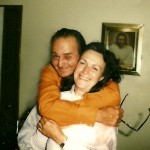 gypsy in her would eventually take the family to Nevada, California, and finally to Washington state. Shirley tells me that she was the happiest when she was traveling. After they retired, Aunt Ruth and Uncle Jim traveled to Oklahoma, and wintered in Arizona and several other places where it was warm.
gypsy in her would eventually take the family to Nevada, California, and finally to Washington state. Shirley tells me that she was the happiest when she was traveling. After they retired, Aunt Ruth and Uncle Jim traveled to Oklahoma, and wintered in Arizona and several other places where it was warm.
She gardened, canned, cooked, baked amazing cakes and then decorated them too, and she sewed their clothing. She was the kind of woman the Bible calls a blessing to her husband and family, and so she was. Today would have been Aunt Ruth’s 89th birthday. Shirley says and I agree, that her laughter is what she misses the most. It lit up her world. Happy birthday in Heaven Aunt Ruth!! We love and miss you very much!!
 For years, when I would research the Spencer side of our family, I continued to run into a woman named Alice Viola Spencer. I kept wondering how she fit in exactly. Early on in my quest for my ancestry, the relationships were a challenge for me. As I ran into her again and again, I learned that she was my great aunt…my grandfather, Allen Luther Spencer’s younger sister. She somehow seemed a bit out of place compared to the rest of his siblings. All the girls were ladylike and feminine, but Alice had a very regal style. I have often wondered what she might have been like, and I find myself wishing I had known her. I think I need to locate some of her grandchildren so that I can ask them about her.
For years, when I would research the Spencer side of our family, I continued to run into a woman named Alice Viola Spencer. I kept wondering how she fit in exactly. Early on in my quest for my ancestry, the relationships were a challenge for me. As I ran into her again and again, I learned that she was my great aunt…my grandfather, Allen Luther Spencer’s younger sister. She somehow seemed a bit out of place compared to the rest of his siblings. All the girls were ladylike and feminine, but Alice had a very regal style. I have often wondered what she might have been like, and I find myself wishing I had known her. I think I need to locate some of her grandchildren so that I can ask them about her.
Alice Viola Spencer was born in Mondovi, Wisconsin on May 5, 1884, and was married to Dennis Alburtice Dunahee in Ladysmith, Wisconsin on May 14, 1902. Their son, Bertie Raymon was born on Feb 19, 1903 in Ladysmith Wisconsin. At some point after Bertie’s birth, they moved to Dewey, Oklahoma, and in 1920 they would move to Twin Falls, Idaho, where Alice lost her husband on March 22, 1938. He was only 59 years old at the time of his death. By the time of his father’s passing, Bertie…who now went by Raymon, had moved to Los Angeles, California. I’m sure that having Raymon in California, and her husband Bert’s passing were the main reasons that Alice would leave her home in Twin Falls and move to West Covina, California, which is where she was at the time of her death, on December 11, 1944, at the young age of only 60 years.
It appears to me that Bert and Alice would only have one child, and that their son, would follow in their footsteps and have only one child as well…LuAlice Irene, who was born on December 5, 1930 in Twin Falls, Idaho. LuAlice would marry, Walter C Ball, and Alice would finally receive four great grandchildren. I’m sure that after two generations of only children, LuAlice and Walter’s children would be a bit of a culture shock…and not a bad one either. I can’t think of anything more fun than listening to a house full of giggling children. I wonder what Alice thought of all those little great grandchildren. I’ll bet it was the thrill of her life.
 Life is filled with unknowns. Things change everyday…sometimes quite drastically. On January 13, 1883, life for my Great Great Grandmother Spencer, would change forever, when her husband, my Great Great Grandfather Spencer passed away, and she had to make the difficult decision to spread her family among her relatives, not knowing if she would ever see some of them again, much less get to meet her grandchildren. But, just as the tragic loss of her husband changed her life forever, so would the return of her children and their children.
Life is filled with unknowns. Things change everyday…sometimes quite drastically. On January 13, 1883, life for my Great Great Grandmother Spencer, would change forever, when her husband, my Great Great Grandfather Spencer passed away, and she had to make the difficult decision to spread her family among her relatives, not knowing if she would ever see some of them again, much less get to meet her grandchildren. But, just as the tragic loss of her husband changed her life forever, so would the return of her children and their children.
Healing can take place in many ways. It may not feel completely like healing when you are still grieving for your husband, but babies can change your whole view of life, and for a grandmother, they can be like a new lease on life. For my great great grandmother, I think that is exactly what happened. Her daughter Teressa, who had gone to Rushville, Nebraska, while her mother and two brothers had gone to Oklahoma, her older sister had taken another brother to Washington state, and her older brother was living in Wisconsin with his family, soon married and started a family of her own. Teressa and her husband, Martin Luther Cox, would go on to raise nine children on their ranch near Rushville, Nebraska. Nine babies over the years…that had to be a  really wonderful blessing for her grandmother’s heart. Those babies could never replace the husband she had lost, but she could rejoice in them…even while she was wishing that her husband could have been there to see it too.
really wonderful blessing for her grandmother’s heart. Those babies could never replace the husband she had lost, but she could rejoice in them…even while she was wishing that her husband could have been there to see it too.
That life change that had torn the family apart, still held a deep feeling of sadness for my great great grandmother, but she knew that her life was not over, even though it may have felt like it at the time of my great great grandfather’s passing. But God had a different plan for her life. She would never marry again, but her life would be filled with the joys of family. She lived out her years in the home of her son Luther’s family, and got to be around those grandchildren all the time. She received visits, and I’m sure went on visits to her other children and those grandchildren, and in the end, her life was renewed with joy again.
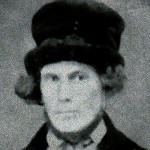 There are many ways for a family to be spread across the country. Most times, these days anyway, it is a choice to move to a different place or climate, but other times, people move for work or education. People used to leave family and friends to head out west to search for gold or to get a piece of land that they could homestead on. But, sometimes the reasons a family gets spread all over the country are very different, and much more sad.
There are many ways for a family to be spread across the country. Most times, these days anyway, it is a choice to move to a different place or climate, but other times, people move for work or education. People used to leave family and friends to head out west to search for gold or to get a piece of land that they could homestead on. But, sometimes the reasons a family gets spread all over the country are very different, and much more sad.
My great grandfather’s family traveled by covered wagon to Wisconsin in 1879. The rest of the family lived in Iowa, so it is my assumption that my great grandfather and his wife, my great grandmother moved in the months following their marriage. My grandfather was actually born in that covered wagon, in Eu Clair, Wisconsin. That said, he was already out of the home when the moves of the rest of his family took place.
My great great grandfather passed away in Webster City, Iowa on January 13, 1883, at the young age of 56 years. His loss would be devastating to the family. As often happened in those years, with the loss of the bread winner, the children had to be farmed out to the relatives. Such was the case in my great great grandmother’s family. Her family would never be the same. Her oldest daughter, Ida, who was also married and wasliving in Washington state, took her younger brother, Allen to live with her family. Her daughter Teressa went to live in Rushville, Nebraska. She and her sons, Luther and Cornealius went to live in Oklahoma.
With travel being more difficult, I don’t know if my great great grandmother ever saw some of her kids again, and if she did, I’m sure it was not often. She would live out her life in  Oklahoma, with her son Luther and his family, and would live to the good old age of 75, on April 6, 1906. While her life was long, especially for that time period, I still have to wonder if it was also filled with a great degree of sadness and loneliness since so many of her children lived so far away. Because women didn’t have the ability to make enough money to properly raise a family in those days, they had little choice but to depend on the charity of family members to make it. These days are different, of course, and many women have been single moms and fared very well. Still, I think it took a great amount of courage to send her children to live with family, not knowing how they would do in life. I’m sure it took a great deal of worry too.
Oklahoma, with her son Luther and his family, and would live to the good old age of 75, on April 6, 1906. While her life was long, especially for that time period, I still have to wonder if it was also filled with a great degree of sadness and loneliness since so many of her children lived so far away. Because women didn’t have the ability to make enough money to properly raise a family in those days, they had little choice but to depend on the charity of family members to make it. These days are different, of course, and many women have been single moms and fared very well. Still, I think it took a great amount of courage to send her children to live with family, not knowing how they would do in life. I’m sure it took a great deal of worry too.

